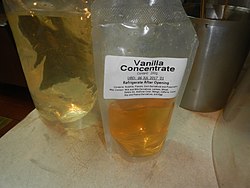
A concentrate is a form of substance that has had the majority of its diluting agent or diluent (in the case of a liquid: the solvent) removed, such that the substance becomes the majority of the composition. Typically, this will be the removal of water from a solution or suspension, such as the removal of water from fruit juice.